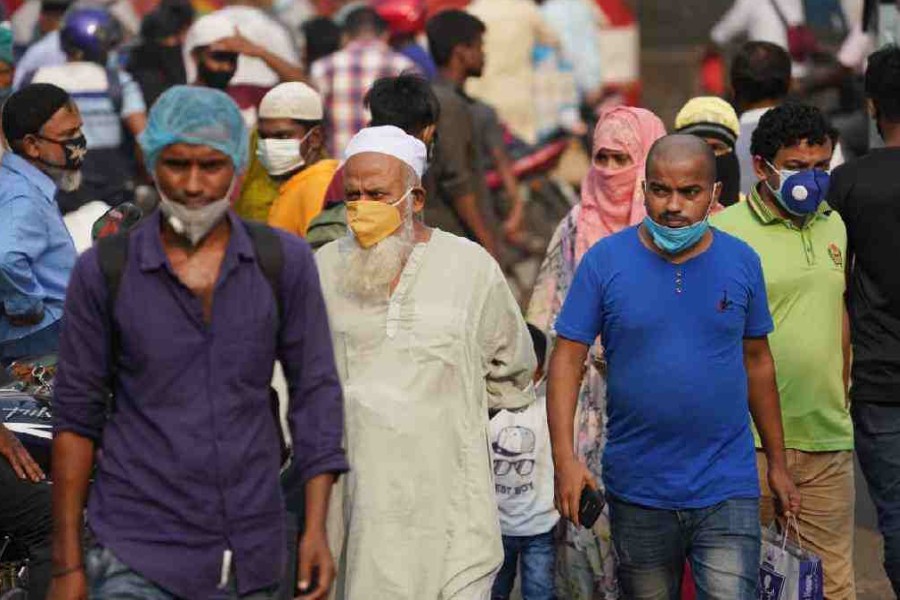Some 19 areas of Dhaka North and South city corporations have been identified as the high-risk red zones for coronavirus transmission, according to an analysis report released on Saturday.
Ten of the areas are under DSCC and nine under DNCC with having over31 percent infection rate, the report revealed by the Institute of Epidemiology, Disease Control and Research (IEDCR) said.
Roopnagar and Adabar thanas were the highly risky areas with 46 percent and 44 per cent detection rates respectively.
The 19 areas are: Roopnagar, Adabor, Shah Ali, Rampura, Turag, Mirpur, Kalabagan, Tejgaon, Mohammadpur, Mughda, Gandaria, Dhanmondi, Hazaribagh, New Market, Chawkbazar, Sabujbagh, Motijheel, Darussalam and Khilgaon.
The areas marked orange with 21-30 per cent infection rates were Shahbagh, Bangshal, Lalbagh, Shahjahanpur, Ramna, Kamrangirchar, Shyampur, Badda, Banani, Uttarkhan, Sher-e-Bangla Nagar, Sutrapur, Jatrabari, Pallabi, Kafrul, Demra, Wari, Bhatara, Dakkhinkhan, Khilkhet, Kadamtoli, Uttara Purba Thana, and Paltan.
The areas marked yellow with 11-20 per cent infection rates were Tejgaon Development, Uttara Paschim Thana, Bhasantek, Gulshan, Cantonment Thana, Tejgaon Industrial Thana, and Airport Thana.
The IEDCR tested 14,332 samples of DSCC between March 27 and April 02 last. Of the samples, 5103 were positive (detection rate 36 per cent).
In DNCC, 10,843 of the 36,771 samples tested were positive (detection rate 29 per cent).
Seventeen thanas of Dhaka have over 30 percent detection rate while over 20 per cent in 23 thanas and over 11 per cent in seven thanas.
Earlier in an analysis on the source of infection, published on April 08 last, the IEDCR said 61 per cent people were infected from markets and public transports, 35 per cent from religious installations, 32 per cent from public gathering, 26 per cent from visiting health centres and hospitals, 22 per cent from contact with other Covid infected persons, 13 per cent from inter-division travel, 12 per cent from social programmes, 4.0 per cent from tourist spots, 3.0 per cent from participation in religious activities, and 3.0 per cent from other places.


